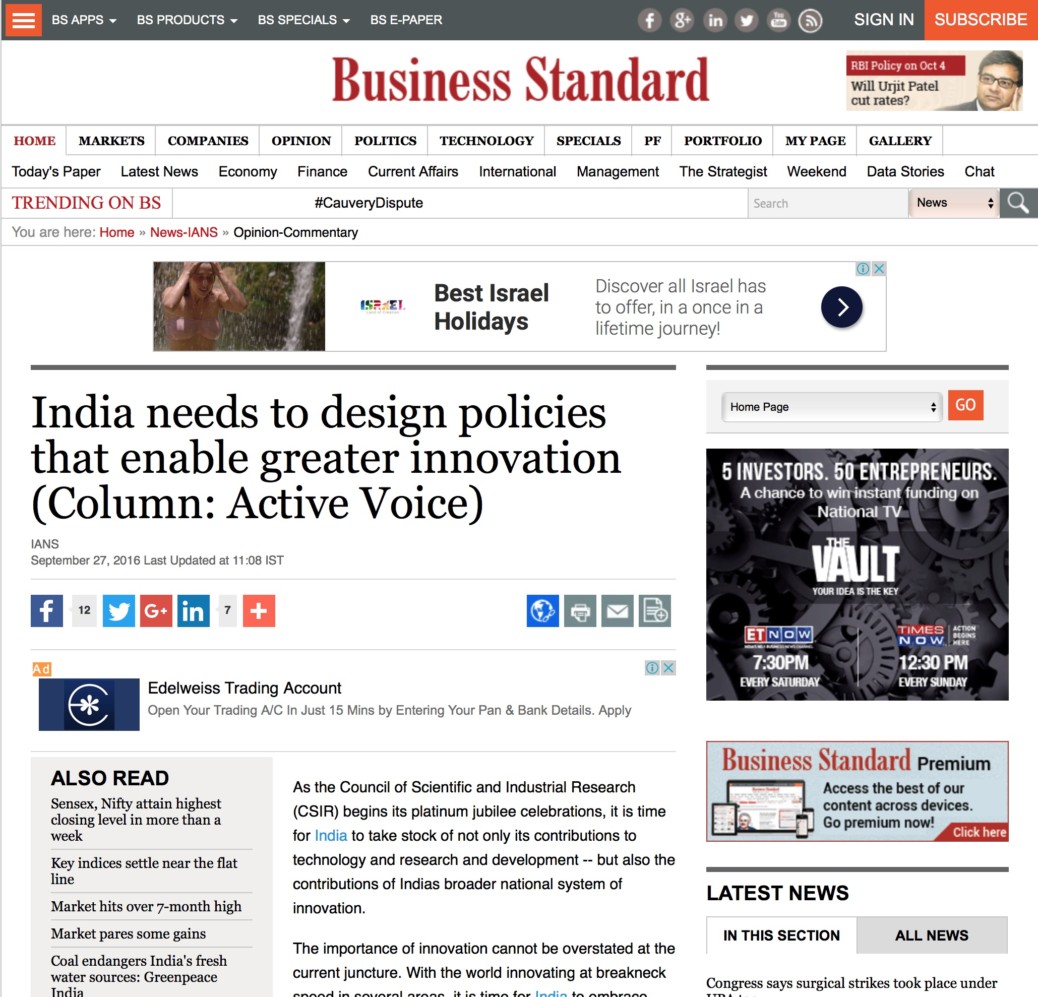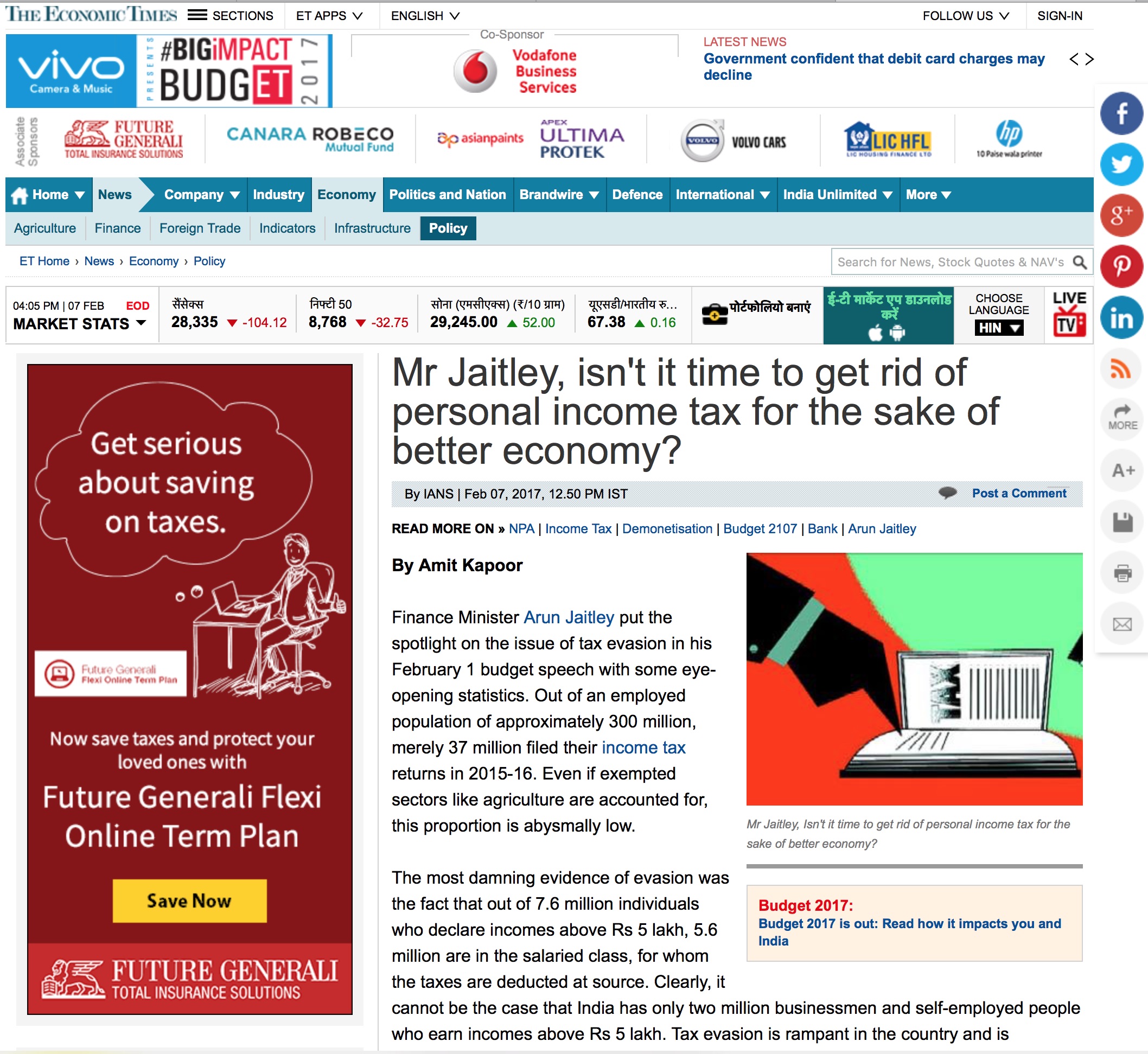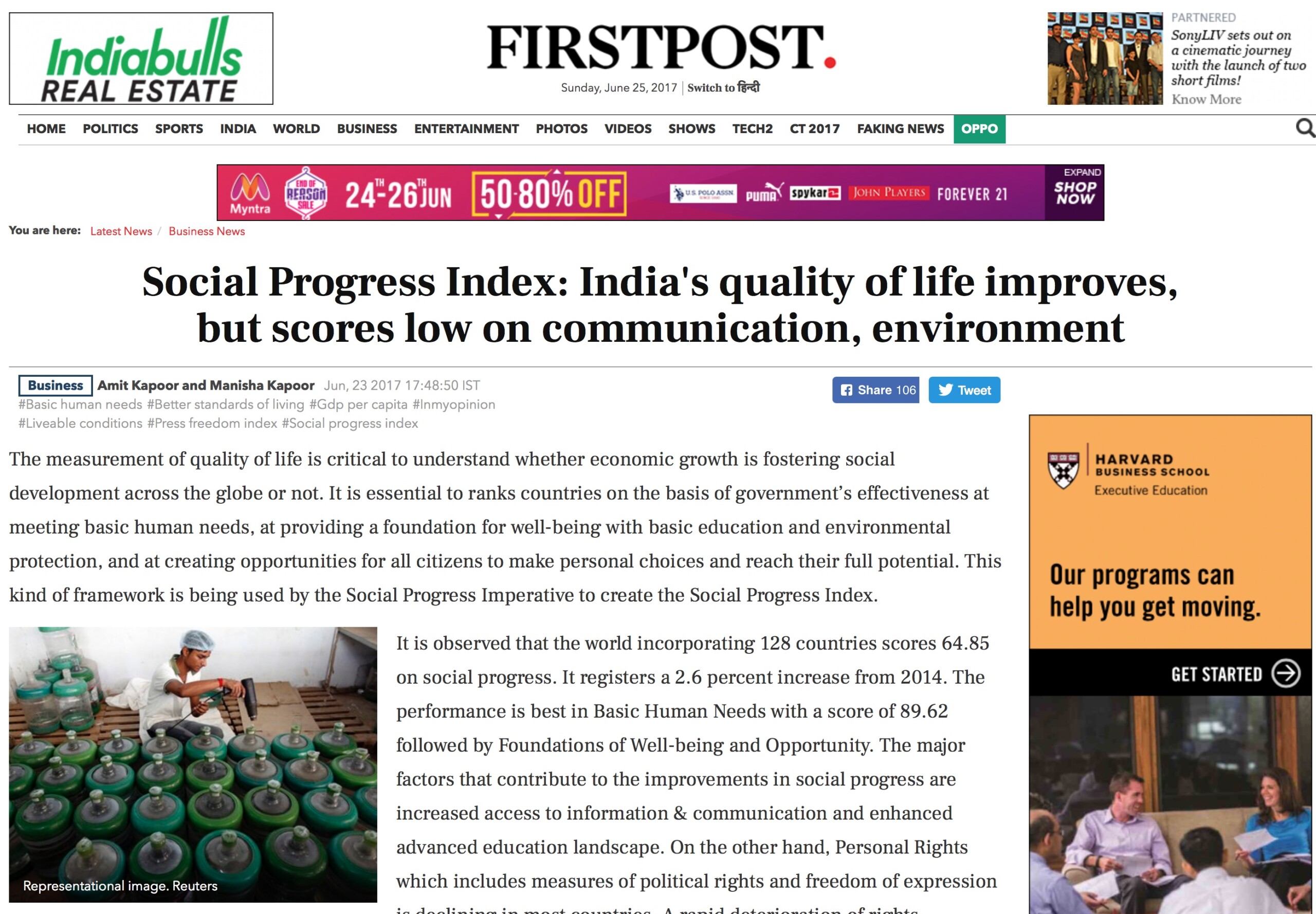Amit Kapoor and Divyansh Sahai
It is widely regarded that technological progress, especially in cities which have now become the centres of development, leads to economic growth over time. In a rapidly advancing world armed with digital technology, the role of city governments is particularly enhanced for leveraging the benefits of the same. City governments, then, are not just mere instruments for providing basic infrastructure and services but go beyond to create, grow and nurture a complex web of coordinated actions among various actors in the city, leading to the generation, exchange, and accumulation of ideas.
City governments play an instrumental role in matters related to land use planning, labour market mobility, adoption of technology, availability of specialized services, and prevalence of innovation practices. Moreover, they play a pivotal role in facilitating ease of doing business in processes related to permissions, licenses, and compliance requirements, in addition to ensuring that essential amenities like hospitals and parks and services like law and order, social security, protection of property rights etc. are accessible and functioning. By promoting high-density growth, city governments can allow workers with differentiated skills and firms with specific needs to reduce their search costs. They provide transportation systems that impact the ability of people to live, work, and play together. Affordable housing markets are either provided or coordinated by them as well.
At the same time, it is important for city governments to have a concentrated focus on the changing needs and demands of the city along with evolving scenarios. In other words, context-specific decisions like strategic diversification into different sectors of a city’s economy, like real estate, agriculture, etc. Diversification into the real estate sector would involve the adoption of integrated economic and land use planning frameworks, establishing effective mechanisms for quick approvals, providing skilled architects, trained masons /construction workers, etc. A foray into agri-processing, for instance, would need to be backed by the provision of packaging units, cold storage units, marketing mechanisms and transportation infrastructure. Similarly, diversification into complex machinery would require a focus on the availability of appropriate technical skill sets, policy incentives for manufacturing, construction of convention and exhibition centres, and forward-backwards linkages to support the industry. Cities focusing on tourism have different needs from those focused on the automobile industry. Similarly, cities focused on textiles will have vastly different needs from those focused on financial services.
It has also been seen, however, that city governments do not primarily associate themselves with the vital role of human capital development. This may again stem from the siloed approach to governance where anchoring such functions is thought to be exogenous to their mandate. Ultimately the city suffers because it lacks the custom-fit capabilities needed for its economic context. Traditional approaches to human capital development have focused on acquiring academic degrees and not on developing capabilities. One of the reasons for this is the disconnection between the worlds of industry and academia. This is why a society may end up with a vast number of graduates but would still not have enough people who know how to make furniture, join pipes, or create insulated electrical wiring.
General education can be a poor proxy if it does not give impetus to productive knowledge. Instead of thinking of it as ‘doing by learning,’ education today needs to be reimagined as ‘learning by doing.’ City governments can catalyse the acquisition of productive knowledge as per the city’s needs through the formulation of apprenticeship programs, learn-on-the-job schemes, avenues for internships/ fellowships for college students, experiential learning mechanisms, etc.
In today’s age, governments must be mindful of the impact of technology and globalization on the changing world of work and new jobs. Digital inclusion is vital to ensure inclusive growth as new technologies of the era threaten to widen gaps and create greater chasms in society. They need to spend on creating excellent IT infrastructure and a digital backbone to enable the acquisition of new knowledge. Economic growth, driven by the acquisition of this new ‘productive knowledge’ and the twin forces of new technology and globalization, make it imperative for city governments to think of job creation as a dynamic process built on continuous interplay between their learning systems and industrial evolution. The role of the government in creating markets, stimulating innovation, creating dynamic networks and pushing the frontiers of new technology has been instrumental in many contexts. Japan in the 1970s and 80s is a case in point. The flow of new knowledge can best explain the rise of Japan in this period through the collaboration between academia, businesses and the government, creating robust user-producer linkages, diversification of economic activities and strong integration between R&D, production and technology import activities at the enterprise level.
Each economic context places a unique ask on city governments. It’s difficult for them to be able to decipher those specific needs in the ordinary course, thus necessitating a need to seek answers through the creation of ‘formal’ mechanisms of sustained and meaningful dialogue among various stakeholders. These mechanisms may include official forums for dialogue between actors within the government, communities, industry and academia in the form of Joint Working Groups; Investment Promotion and Facilitation Councils; Economic Development Councils, etc. A simplistic view of cities as mere providers of basic infrastructure and services like water, roads, waste management, street lighting, etc., is, thus, detrimental to our thrust on economic growth. Economic growth takes place endogenously through a complex web of coordinated actions in the fields of administration, finance, policy, planning, infrastructure, technology, etc., by different actors in the city. In this regard, actions taken by city governments are intrinsic, inseparable, and important in the catalysis of this process and cannot be thought of in isolation.
The article was published with Business World on June 28, 2023.
























